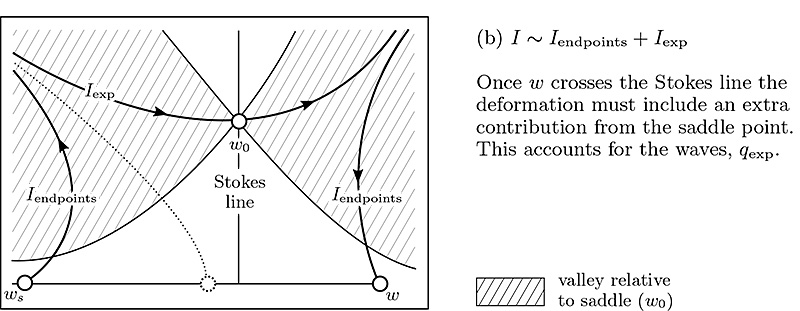30 January 2017: On reduced models for gravity waves generated by moving bodies
I'm happy to announce a recent paper published in the Journal of Fluid Mechanics. There is an interesting story behind this paper.
 (Left) Ernie Tuck (1939–2009) (Right) Marshall Tulin (1926–)
(Left) Ernie Tuck (1939–2009) (Right) Marshall Tulin (1926–)
Since around 2007–2010, I'd often play with certain reduced models for studying gravity wave generation by two-dimensional bodies. These reduced models you can derive using some more modern techniques in asymptotics, but actually I had noted that in the early 90s, the late Ernie Tuck from the University of Adelaide had published some thoughts on similar reductions. I had thought that this was the end of the story.
A few years ago, I spotted a curious question that was written in a transcription of audience questions in a conference where Tuck had presented his research (in fact, such transcriptions are quite rare in this day and age). Marshall Tulin, another famous hydrodynamicist from Santa Barbara, had asked the following question:
“Isn't it true that the two dimensional wavemaker problem can be presented in terms of an ordinary differential equation in the complex domain, at least to some higher order of approximation?”
Tuck had replied that he didn't know the answer, and the matter was apparently left at that. However, Tulin's question was certainly a deep one, and the fashion in which it was asked led me to believe that Tulin had been on a similar trail even before 1991. But contacting Tulin was no easy feat; though he was listed as Emeritus at Santa Barbara, my first email had bounced. In the end, I managed to locate a personal email, and so I sent off a letter asking if he could fill me in on what his intention was behind the question.
Tulin was quite pleased to have been asked for more details (as it had been over two decades since that conference!). He told me that he had, in fact, published a report in 1983 for the 14th Symposium on Naval Hydrodynamics where he laid out a particularly involved reduction of the water wave equations.
He explained that nobody had really picked up on the 1983 paper (1 current citation!), even though there were a series of questions he had asked and a series a results he had presented that had seemed of some importance. He encouraged me to look up the manuscript and close the chapter, if I could.
And so I did. The result is this most recent paper.
